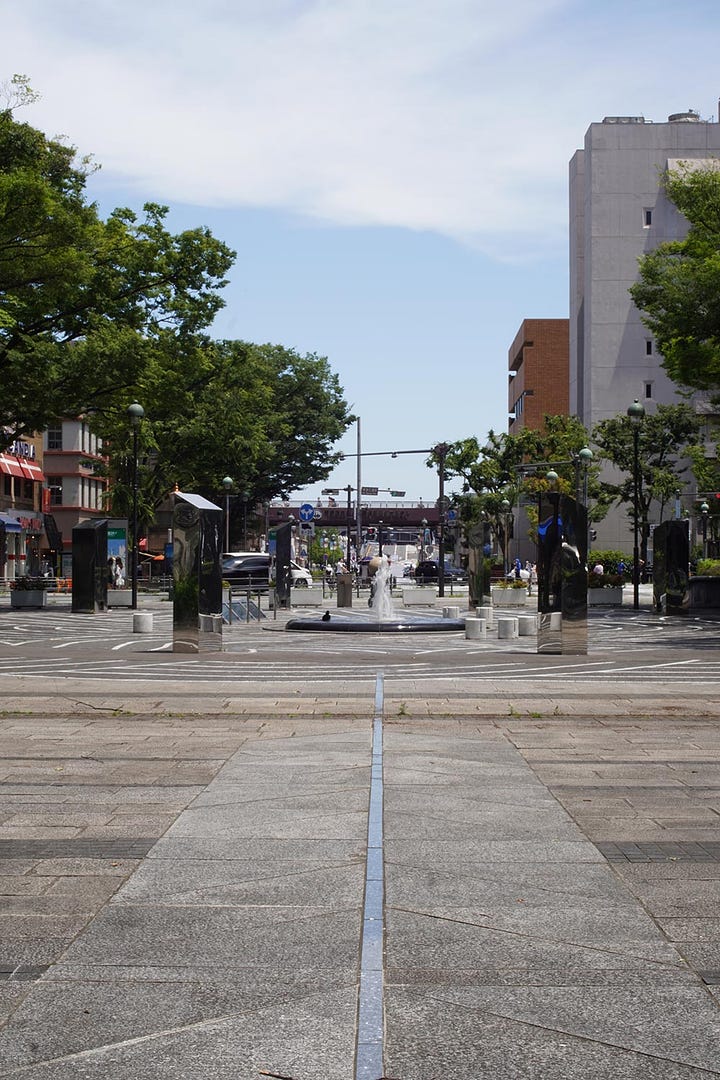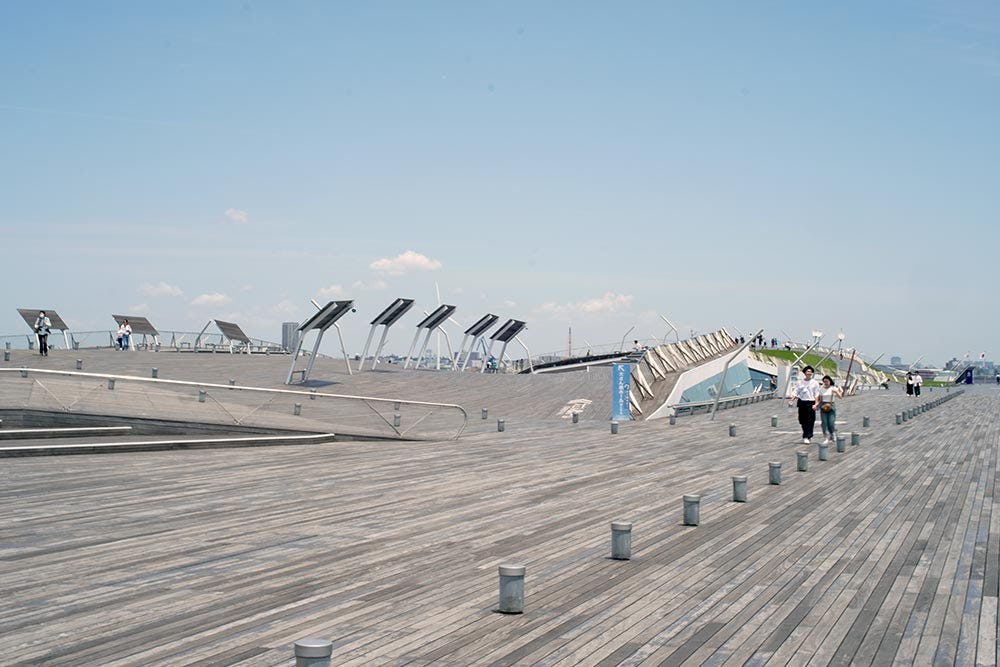06/07, Arts Culture Tourism from Tokyo
Osanbashi Pier & the Yokohama International Port Terminal
Welcome to NOTEBOOK, a cultural guide to art, design and architecture, along with a resource of local news and information in English giving a realistic view of Tokyo and further afield.
06/07 – The prefectural government of Saga unearthed a sealed sarcophagus Monday at the Yoshinogari Historical Park. The Japanese government announced new plans on Tuesday to speed up decarbonization, generating 15 trillion yen (107 billion USD) and investing in hydrogen. The government also announced its plan to increase the proportion of female executive board members at companies listed on the Tokyo Stock Exchange. And also on Monday, the Japanese-made SLIM lunar probe was unveiled at the Tanegashima Space Center, Kagoshima ahead of its maiden voyage in August aboard the H3 rocket bound for the moon.
Ever since it opened in 1894, Japan’s gateway to the sea has been Osanbashi Pier, an international port terminal and public space overlooked by Yokohama's Minato Mirai skyline and looking over Yamashita Park port side. Notebook visited one windy afternoon catching the sound of a Dragon boat race off in the distance.


Osanbashi Pier in Yokohama originally opened in 1894. The International Port Terminal that now sits in its place was opened in 2002 after the original pier and site were both redeveloped. It can fit up to four 30,000-tonne ships, with cruise liners from all over the world calling Osanbashi home.
The current terminal was designed in 1995 by the UK-based Foreign Office Architects: an enormous, 430 meter-long project costing almost 240 million USD and taking eight years to complete, prompting the architects at the time to up-sticks and move their studio to Japan as they supervised construction. The result is a steel and wooden landscape rising and falling over the functioning port below which Notebook happened to visit one windy afternoon, catching sound from a Dragon boat race with Hikawa Maru in the near distance, a Japanese cargo-passenger liner built in 1930 and used to ferry members of the Imperial Royal family back and forth between Japan and Europe.
The ship served as a hospital ship during the Second World War. It regularly sailed between Yokohama and Hokkaido after the war and later transported rice from Burma (now Myanmar) and Thailand. From 1950, it established a route between Japan and Seattle, Japan and New York and resumed its Japan-Europe route until sailing its final voyage to Seattle in 1960. It is now permanently moored off the edge of Yamashita park as a landmark and floating museum. As for Osanbashi Pier, the port terminal now gives an almost uninterrupted view of the entire bay, both past and present.
NOTEBOOK episodes are published 3 times a week: Monday, Wednesday, and Friday. We will add things here we couldn’t fit into each episode and use this space as somewhere to answer your questions when your here or thinking of visiting Japan.
It wont necessarily be chronological: we’ll dive back into previous episodes and expand on things that wouldn’t fit — you can only record so much.
We have recently been adding field recordings from different parts of the city, and different parts of the country, while interviews give us a chance to talk with other people on the places they might recommend (or not, for that matter).
And if you have an recommendations or requests, send an email (notebook.podcast@gmail.com) or voice message (speakpipe.com/notebook). Better still, Subscribe and add a comment below. Thanks for listening, thanks for reading, and feel free to use this as your NOTEBOOK.




